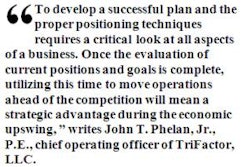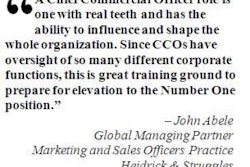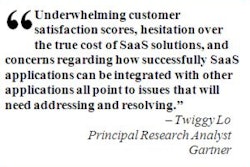Manufacturers need suppliers they can count on – that's nothing new. For most companies, this simple truth is at the heart of supply chain strategies: driving selection decisions, relationship terms and, in some cases, critical business decisions, such as new product development or network design. But today's commodity price volatility, credit crunch and overall economic instability expose a real gap in many manufacturers' supplier initiatives: What's being done to mitigate exposure to supplier failure?
Risk management generally lives elsewhere in the organization, most often in finance. But in the past few years, supply chain organizations have begun to recognize the need for more visibility into supplier risk. To evaluate how well you are evaluating the risk of your supply base, there are certain questions to ask yourself, your company and your suppliers to ensure that you can keep products moving to customers while waiting for the economy to right itself.
1. How much do you really know about your suppliers? Many organizations still consider basic understanding of cost and spend by supplier to be enough. The truth is that, at best, visibility into basic spending data is an innocuous way to drive sourcing strategies. At worst, failing to combine it with other types of information about suppliers, such as financial/banking information, on-boarding status, performance, sustainability and diversity, can lead to financial loss, negative headlines or, worse, customers who go to your competition.
2. Where does the information on supplier relationships live? Odds are good that important information is scattered throughout your organization and outside of it as well. Internally it is in both structured formats within enterprise resource planning (ERP) and materials resource planning (MRP) systems and unstructured formats such as PDF or text-based credentials. It is no wonder that bringing this information together in a single location has been, and continues to be, a major challenge for supply chain teams. Creating a core platform to capture, manage and analyze supplier information will benefit all stakeholders: legal, finance, sales, marketing, operations and other parts of the organization.
3. What are you doing to confront multiple types of supplier risk? Supply chain organizations face risk from many corners, much of it brought on by their own decisions. The rise of highly integrated supply chains increases the chance that a lower-tier supplier failure will have a material negative impact on the business. Cost reduction strategies, such as lean inventory initiatives and global sourcing, increase dependence and, ultimately, supply risk. With global and local suppliers closing their doors at alarming rates, companies must develop and execute systematic ways to continually monitor key supplier health metrics.
4. What are you doing to reduce the total lifecycle costs of working with suppliers? Many first-generation efforts to capture and manage supplier information (e.g., for e-procurement or purchase-to-pay programs) relied on largely manual approaches that were incomplete, went over-budget and were largely ineffective. By focusing on supplier enablement, on-boarding and information management you can achieve the ROI promised on those initiatives and gain the information needed to truly understand supplier stability.
5. How are you ensuring compliance and driving bottom-line results? The concept of "supplier noncompliance" rarely makes headlines in those exact words, but the following phrases do: tainted products, declining quality, late shipments and over-invoicing. Existing solutions, such as procure-to-pay, e-sourcing, contract management and spend visibility, can be helpful but alone are insufficient. Automating the administration and tracking of supplier credentials, certifications, financial and operational health – on a global scale – is essential to avoid noncompliance related crises.
The current economic crisis is escalating the call to action for supplier risk management, with an emphasis on predictive ability that ensures longer lead times for response and minimizing disruption. Manufacturers that create robust strategies and processes for managing supplier information, monitoring overall financial and operational stability, and establishing early-warning systems for alerts when conditions or parameters change will find that the gap on risk exposure can be closed – for better performance today and in the long-run.











